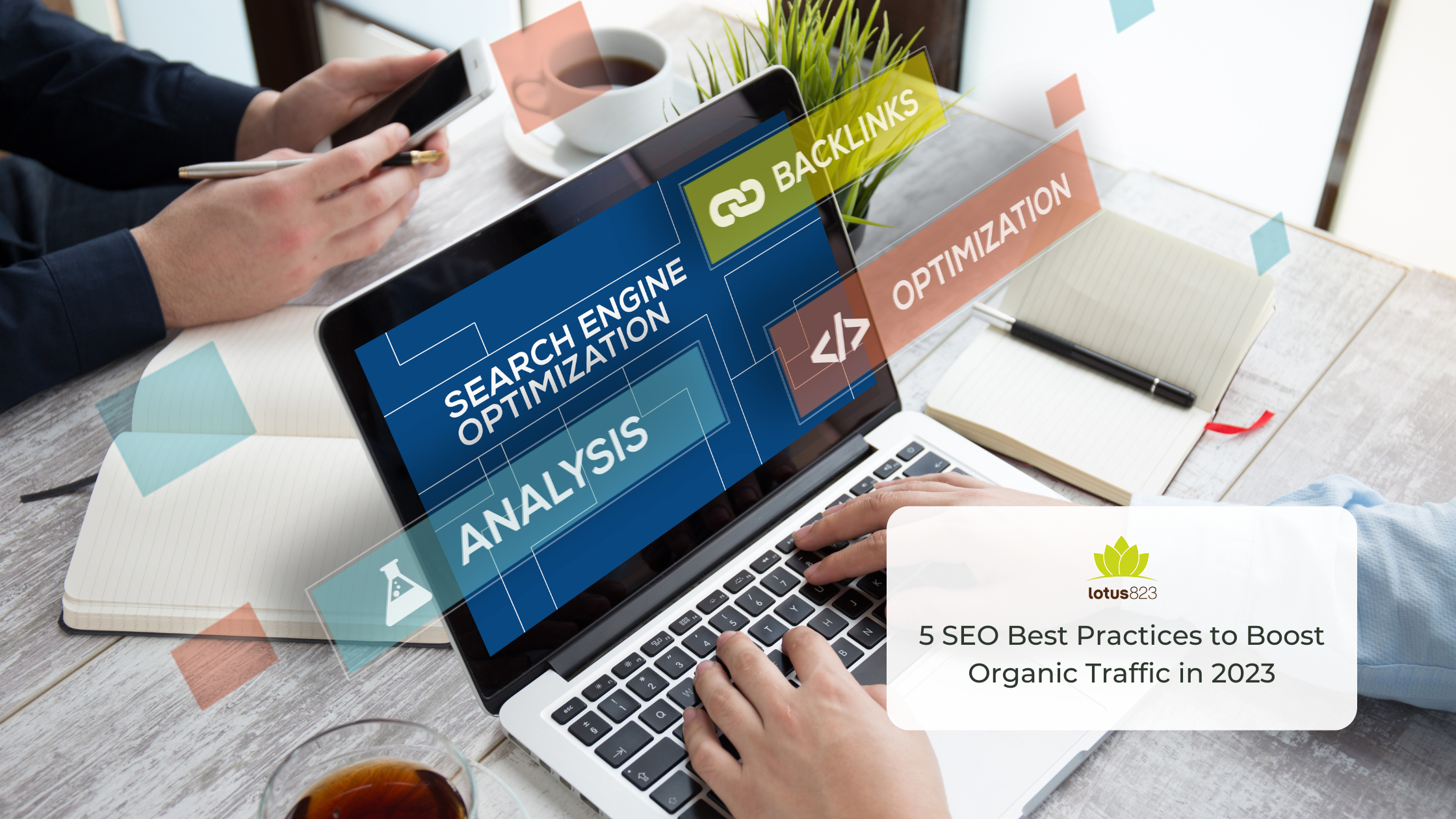
We have all heard of the term SEO (search engine optimization) at one time or another, and the truth is that optimizing your website is tricky and takes a lot of time and research. Taking the necessary steps to optimize your website is important to your brand’s success in driving traffic. That being said, the process can be overwhelming, especially since ranking algorithms are changing constantly. We’re making your job a bit easier by giving you this guide to organically boost your website’s traffic in 2023. Continue reading to learn the best SEO practices!
Study Your Competitors
Just like any other part of marketing, it is important to track what your competitors are up to. Look at their keywords, images, descriptions, links, and more. This can help give you an idea of what your brand should be doing and align with the competition. Software companies such as Semrush can make this research easier for you, but if you choose not to, that isn’t a problem. Simply type in your competition on your search engine of choice and look what comes up. Analyze the page titles and descriptions on the search engine, images in the image section, and their website. Take note of the language and words that they repeat.
Identify Keywords
Now that you have done your research, it is time to work on your website. Think about the words that describe your brand as a whole and your products individually. When adding on your keywords you want to try to avoid keyword stuffing and using high-volume keywords as this can cause your site to be flagged and lower your rankings. So, keep your keywords authentic to your product and industry. Some tools can help you figure out what keywords users are searching for and not, like Google Trends (free), Keyword Tool, MOZ, and more! Follow these 5 SEO tips to improve your content.
Optimize EVERYTHING
When we talk about optimization, the key factors to look at are your titles, pages, descriptions, and images. Titles for your webpage that are displayed on the search engine (Meta Title) should be 50-60 characters in length. While your Meta Description should be 150-160 characters. Together your title and description should give a brief overview of your page. Keep in mind that this will be the first thing visitors will see on your website so it should be interesting, eye-catching, and to the point. First impressions matter!
Images are a great way to make your website more visually appealing. Having your images optimized can help your page rank better on search engine image results, such as Google Images, which can help drive traffic from a different route. Semrush recommends that you add titles to images using keywords, use alt text to describe your images, avoid using crowded pictures, and use high-resolution images, while being mindful of the size (as this can affect blurriness and graininess), to best optimize your images.
The Importance of Links
Linking to different websites adds clarity to the brand you are referencing or mentioning and gives proper credit. This helps make your website more authentic. It is important for your brand to be mentioned by other sites. Building your backlinks (a website that mentions you) will elevate your own credibility as a brand and your expertise in the industry. This is where it is important to monitor your brand mentions and images on other sites. Again, this can be done with software tools or by digging through searches. If you run into a website that mentions your brand or product without a link, kindly reach out and ask for the backlink; this will help traffic from that site refer directly to yours.
Page URLs should be short and simple so that when someone copies the link, it doesn’t take up multiple lines, which takes up unnecessary space. Your URLs can and should mention some of your keywords to direct the right traffic to your page. Use these links on your various pages to direct visitors to get exactly what they are looking for. This can help your pages that don’t get much traction gain more traffic by taking advantage of your more popular pages. Whenever you think about adding a link to your site don’t be obsessive and beware of toxic links, as both can negatively affect your ranking
Reduce Load Time
A 2-second delay in load time resulted in abandonment rates of up to 87%, according to a case study from 2013. Today’s need for even quicker speed offers this early finding some perspective. A lot goes into loading issues, such as file size, code density, caching problems, heavy images, unnecessary data, and more. Overall, simple and clean is better, do not overcrowd your page.
Wondering how your current website ranks? Contact us for a free brand audit today!






